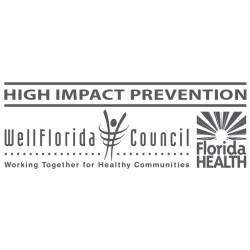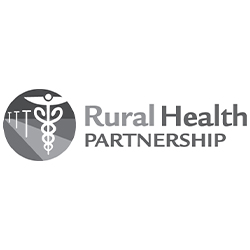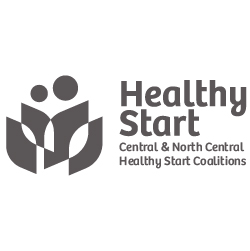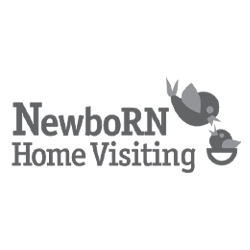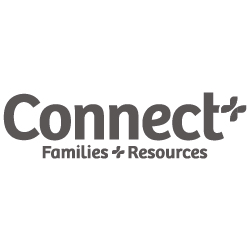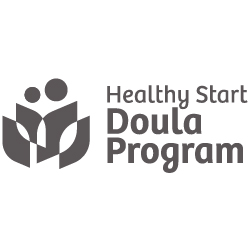Dissecting Obamacare
Lake County Healthy Living Magazine
By John Sotomayor, Contributing Writer
No other policy under President Barack Obama’s administration rallied with greater determination under the campaign slogans of “Hope” and “Yes We Can” like his Affordable Care Act (ACA), also known as Obamacare. Yet since enrollment began on Oct. 1, the process hasn’t quite worked as originally pitched, leaving many to doubt and ponder, “Can we?” With the March 31 deadline only three months away, Healthy Living places ACA on the examination chair, taking a close look at some of its most praised yet contentious aspects, its challenges, and recent updates to help you better understand what to expect.
Irony has a way of deepening one’s perspective on a situation. Tasked with the examination of the overwhelmingly massive health care law and pressed for time, I found the number of a local navigator — an expert on the health insurance marketplace — and called for help. The answering machine message said, “Please allow up to 72 hours for my returned call.” That navigator serves two counties. The next closest navigator serves four. My instinct said this could take forever. The clock was ticking; I did not have three days to wait. I had to work fast but could not access the system. What was I to do? At that very moment, I understood what the dilemma of the new health care legislation was all about.
On paper, the initial diagnosis looked good. If the ACA was compared to a vaccine, then its antibodies were fortified with immunity. Following years of Capitol Hill drama, a Supreme Court case, a polarizing presidential election, and even the threat of a Mayan apocalypse, the law staved off partisan infection, clearing the way for enrollment. But as thousands attempted to enroll, the marketplace website was plagued with problems that created backlogs, delays, and mass confusion. The ACA was in need of some immediate medical attention.
Carrying Health Care
The ACA is actually comprised of two separate legislative acts: the Patient Protection and Affordable Care Act and the Health Care and Education Reconciliation Act. Together, they were expected to essentially expand insurance coverage, lower costs, and guarantee more health treatment choices for all Americans. It was also anticipated to expand Medicaid coverage to millions of low income Americans, while holding insurance companies accountable for specified essential services.
One of the greatest commitments of the ACA is to mitigate the denial of coverage for people with pre-existing conditions. The Pre-Existing Condition Insurance Plan (PCIP) establishes health coverage availability to United States citizens who have been refused health insurance and who have been uninsured for at least six months.
Insurers have warned, however, a large group of young people is needed to join because the premiums paid by younger, healthier adults between 18 and 35 are needed to offset the cost of older and less healthy customers, who generally produce far more in medical bills than they provide in premiums.
Dr. Richard Bosshardt, a plastic surgeon with Bosshardt & Marzek Plastic Surgery Associates in Tavares, feels this is a fatal flaw. “In order to cover people with serious medical problems and pre-existing conditions, insurance companies will have to either recoup with an increase in premiums or transfer the cost to healthier people. Obamacare must sign up enough young people that are not consumers of medical care to buy health insurance in order to pay for the care of the unhealthy… If they don’t, Obamacare will flat out fail because it won’t be able to sustain itself.”
Dr. Steven Pillow, a private practice OB-GYN in Mount Dora, says shouldering younger Americans with the burden for the elderly, unhealthy ones was attempted before and should indicate what we can expect.
“This was tried with the HMOs,” Pillow said, “and that was not a resounding success.”
The ACA is not free care. With many more people who cannot afford to pay — or to pay more to get more coverage — where will the money to fund that come from? The short answer is taxes. Many of the taxes are aimed at the health industry itself, including affiliated services like massage parlors and tanning services. Some individuals, mostly the wealthiest Americans, will also be shouldered with the burden of paying more into Medicare. To counter, hospitals and insurance companies participating in Medicare will get paid somewhat less.
Acquiring Health Care
It was expected once the health care law went into effect that the fundamental ways we would all acquire health care would be through your employer, the government, the marketplace, or continue with no coverage. Approximately half of us would get insurance through our jobs, as we have been. Nearly a third would get coverage from the government through Medicare and Medicaid. Almost one in 10 would buy insurance themselves. However, another 30 million of us would remain without coverage. Yet within the first three months of implementation, the ACA has seen some disparity here, as well.
The Workplace
The expectation of the new health care law was that many Americans would receive coverage by their employers and for them, not much would change. The promise included new advantages, like free preventative care and caps on how much you would have to pay out of pocket. The unforeseen direction, however, is that some small employers are likely to stop offering health benefits, particularly if a large percentage of their workers are eligible for subsidies to buy health insurance on the marketplaces set up through the ACA.
The major changes are for those employed in larger companies but not currently covered. Insurance reform will require companies with 50 employees or more to cover full-time workers or pay a penalty; however, this mandate has been delayed until 2015. Smaller businesses will not be penalized for declining to buy insurance, but they will be encouraged to do so.
Government
In addition to offering health care to the currently uninsured, the belief was that Medicaid would expand to cover poor adults, many of whom are not currently eligible. If your income is up to 138 percent of the poverty level, or $15,856 income for a single person, Medicaid would cover you, most likely under a private insurance plan.
“The concept that all patients will have insurance is very attractive,” Bosshardt said, “but the moment I heard the Obamacare ‘safety net’ for the uninsured was going to be to expand Medicaid, my first thought was, ‘This is never going to work… Medicaid doesn’t work very well now, it will be even worse when you make it into a bigger program.’”
The expectation was that those of us covered with government assistance would continue with little change for seniors on Medicare. Yet providers are looking at major reimbursement cuts and many Medicare Advantage plans have seen significant changes. Medical Advantage plans are a type of Medicare health plan offered by private companies that contract with Medicare to provide Part A and Part B benefits. Medicare Advantage plans include Health Maintenance Organizations, Preferred Provider Organizations, Private Fee-for-Service Plans, Special Needs Plans, and Medicare Medical Savings Account Plans. According to The Heritage Foundation, a conservative research think tank based in Washington, D.C., Medicare payment cuts would total $716 billion over the next 10 years.
Hospitals would take the biggest hit ($260 billion), followed by the Medicare Advantage program ($156 billion).
Dr. Kim Ireland, an ophthalmologist with St. Luke’s at the Villages, warns that patients need to be aware of the type of plans they are participating in and make sure nothing has changed. For instance, Dr. Ireland sees more and more patients are signing up for Medicare Advantage plans, or other substitutes for Medicare, and not all of the Medicare Advantage plans allow free access to the doctor of choice. Some of the advantage plans limit the participating doctors.
“It has been a challenge for us to maintain participation in many of these plans,” she says.
Another hitch is the Supreme Court ruled state governors and legislatures should decide whether to participate in Medicaid expansion. The federal government will cover the bulk of the cost for participating states. For those who do not, the marketplace will be federally facilitated. The poor, however, may be left with the same options they currently have. According to the Kaiser Family Foundation, a nonprofit private operating foundation, Florida did not decide to implement Medicaid expansion at this time (as of December 2013), so Florida is a federally facilitated marketplace.
Buy Your Own
For those not covered, or find their work coverage too expensive, there is a new way to buy insurance on your own under the marketplaces. The expectation on the marketplace has been the equivalence to a health insurance mega-mall, designed to make buying health care coverage easier, useful, and more affordable. It was projected to enable individuals, families, and small businesses to find answers to questions, compare health plans, determine eligibility for tax credits, and ultimately help people enroll in a health plan that met their needs and budgets. The promise included private insurers would compete for your business. However, due to website woes and registration roadblocks, the marketplace at this point has not lived up to expectations. Since commencement on Oct. 1, the marketplace has had incomplete back-end payment access and is plagued with extensive technical issues that, to this day, prevents registration.
A Dec. 3 Reuters article stated the Centers for Medicare and Medicaid Services (CMS) had not yet completed the back-end part of the website that would transfer billions of dollars in subsidies for plan premiums and cost-sharing payments to insurance companies. CMS media representative Julie Batalie stated that “the government will make the payments to insurers for premium tax credits and cost sharing on time,” leaving some to wonder if that meant the federal government would be the ones left paying the premiums.
Within the same article, Bataille stated the government has a work-around, whereby the insurance companies would calculate the amount for those subsidies, bill the government, and the actual amount would be reconciled later.
There are other safe measures in play. Recently, federal officials announced a pilot program allowing consumers to enroll directly through insurance companies and to bypass the troubled Healthcare.gov. Federal health officials said that the pilot program has worked well in the test states of Florida, Ohio, and Texas — and that some insurers are planning to expand direct enrollment beyond their initial efforts.
For instance, Florida Blue, the state’s largest health insurer, recently announced the company will expand direct enrollment capabilities to all of its channels, including retail centers, online, and through agents and brokers.
Concerns have also been raised whether coverage will be active without a method to pay for the insurance once they register on the marketplace. Heather James, navigator for Marion and Sumter counties, recommends the safest course for consumers to take is not to wait and see, rather take the initiative and contact their insurer directly after enrolling in a plan and confirm that they have paid their premium in the correct manner and that the consumers initial enrollment materials will be mailed to them.
Be Proactive
America collectively needs a healthy workforce that produces more than it consumes so that we are a healthy nation in a competitive world. As Americans ring in 2014, chief among their New Year’s resolutions should include starting a healthier lifestyle and in the event of an unforeseen accident or illness, be properly covered.
With so many options, you will need to do your own research to find the plan that fits best with your medical needs and budget. The ACA provides experts called health insurance marketplace navigators to assist you. The phone numbers for the nearest health insurance marketplace navigators in our local area are: 1.877.564.5031 (Orange, Osceola, Seminole, and Lake) and 352.359.2519 (Marion and Sumter). To learn more about navigators and health insurance exchanges, visit www.wellfl2014.dev.acceleration.net.
Open enrollment concludes on March 31, so now is the time to figure it out and set yourself up for the best insurance for you.
SOURCES: “Health Reform.” The Kaiser Family Foundation. kff.org/health-reform/; “Welcome to the Marketplace.” www.healthcare.gov/marketplace/individual/; “ObamaCare: Pros and Cons of ObamaCare.” obamacarefacts.com/obamacare-pros-and-cons.php; “Premium Tax Credits: Answers to Frequently Asked Questions.” Center on Budget and Policy Priorities. www.cbpp.org/files/QA-on-Premium-Credits.pdf; “Information on Navigators and Registering.” Florida Department of Financial Services. www.myfloridacfo.com/Division/Agents/Industry/News/Navigators.htm#.UrG-qPRDty0; “Florida’s Health Insurance Marketplace.” Florida Health Choices. myfloridachoices.org/; WellFlorida Council. wellfl2014.dev.acceleration.net; “Insurers warn of problems with Obamacare enrollment surge.” www.reuters.com/article/2013/12/04/us-usa-healthcare-idUSBRE9AR05M20131204; “Health exchanges slow to attract young, healthy.” bigstory.ap.org/article/lack-younger-enrollees-threatens-exchanges (Accessed Dec. 18, 2013)
Read the Lake County Healthy Living Magazine article

